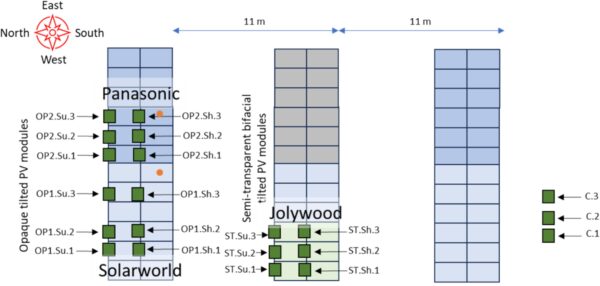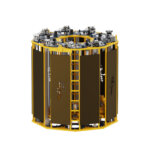Photovoltaics for agromining
Researchers in France have investigated how photovoltaic power generation can be combined with the growth of hyperaccumulating plants in disused, contaminated brownfield land and have found this combination could help increase the profitability of the so-called agromining - a plant-based approach to cleaning up contaminated environments.

Researchers in France have investigated how photovoltaic power generation can be combined with the growth of hyperaccumulating plants in disused, contaminated brownfield land and have found this combination could help increase the profitability of the so-called agromining - a plant-based approach to cleaning up contaminated environments.
A group of researchers from France's Université de Lorraine has investigated the impact of ground-mounted PV plants on the growth of the so-called hyperaccumulating plants in disused, contaminated brownfield land and have found that the solar panels have a protective function for the plants, which have the ability to accumulate metallic trace elements (MTEs) in their aerial parts and recover them for industrial use.
The use of these plants to restore anthropized environments such as industrial wastelands is known as agromining, which is itself a branch of phytoremediation – a plant-based approach to cleaning up contaminated environments.
“These plants are able to absorb bioavailable MTEs through their roots, followed by their translocation to their aerial parts where they are stored in non-toxic forms,” the scientists explained, noting that the most common MTEs present in contaminated areas are such as arsenic (As), cadmium (Cd), copper (Co), lead (Pb) and zinc (Zn). “This process has been well received by the public and its main advantage remains its low cost compared to conventional soil decontamination methods.”
The research work focused on a special kind of hyperaccumulating plant known as Noccaea caerulescens, which is commonly utilized for accumulating Cd.
The experimental setup was located in Bourget-du-Lac, in the Auvergne-Rhône-Alpes region in eastern/south-eastern France, and consisted of a ground-mounted PV system composed of three rows of south-oriented opaque and semi-transparent PV modules tilted at 30° and elevated 0.8 m from the ground. The modules were installed together on the strips spaced 11 m apart to prevent unwanted shading. Tests were conducted during fourteen weeks from July to November 2023.
The scientists used 29o W PV modules from Germany's Solarworld and 285 W panels from Japan's Panasonic, dubbed, OP1 and OP2 for the experiment, respectively. Furthermore, it utilized 410 W semi-transparent bifacial PV modules from Chinese manufacturer Jolywood, named ST for the experiment.
Image: Université de Lorraine, Applied Energy, CC BY 4.0

The group used T-type thermocouples to measure PV module temperature and a sensor measuring the photosynthetic photon flux (PPF) in the photosynthetically active radiation (PAR) spectrum of the plant cover. It also used an anemometer to measure wind speed, a pyranometer to measure global radiation, and a weather-sheltered ambient air temperature sensor to measure ambient air temperature and relative humidity.
The testing showed that the solar panels have a positive impact in protecting the plants from “intense” solar radiation, with plant biomass growing up to three times more under the panels than in reference areas without modules. Furthermore, the plants grown under the PV modules were found to have am 18 times higher capacity to efficiently convert solar energy.
“The results showed that plant cover partially exposed to the sun developed potential defense mechanisms against intense solar radiation, while plant cover under the shade of the PV modules received optimum protection, promoting their development,” the scientists stated. “Therefore, we recommended growing Noccaea caerulescens under the shade of opaque PV modules during periods of intense solar radiation.”
They also found that plant evapotranspiration, thanks to its cooling effect, could help PV module performance improve by around 18%, especially under “pronounced” sunny conditions. “We recommended that the phenomenon of evapotranspiration should be taken into account in the thermal modeling of PV modules and their energy production,” they concluded.
Their findings are available in the paper “What is the optimal configuration for integrating hyperaccumulating plants with photovoltaic systems to enhance plant development and energy production?,” which was recently published in Applied Energy.
What's Your Reaction?

























































